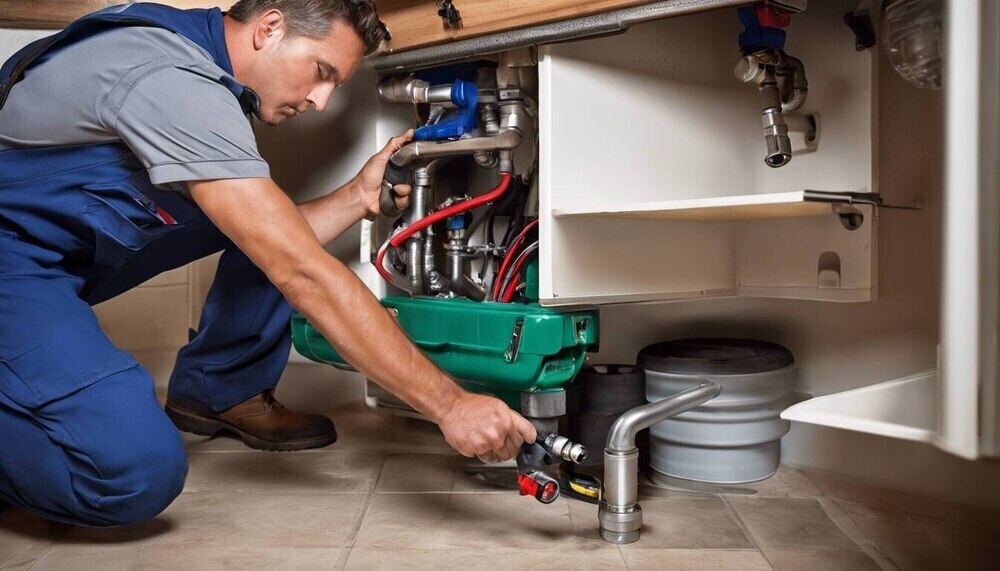If you’re a homeowner in West Palm Beach, Florida, chances are you’ve asked yourself, “Are some gutters better than others?” This seemingly simple question is actually a key consideration when maintaining your home in a coastal, subtropical climate like Palm Beach County. The right gutter system can protect your foundation, landscaping, and even your roof from Florida’s frequent downpours and tropical storms. Choosing the wrong one? That could lead to water damage, mold growth, and costly repairs.

In this guide, we’ll break down the different types of gutters, the materials, the pros and cons, and—most importantly—how to choose the best gutters for your West Palm Beach home. Let’s get into it.
Why Gutters Matter in West Palm Beach
Before comparing gutter types, it’s important to understand the climate challenges unique to South Florida. West Palm Beach experiences:
- High rainfall, averaging over 63 inches per year
- Hurricane season with intense storm surges and wind
- High humidity that encourages mold and mildew
- Salt-laden air, especially in coastal areas like Palm Beach Island and El Cid
These factors mean that gutters in this region must be durable, corrosion-resistant, and efficient at channeling water away from your property.
Types of Gutters: Not All Are Created Equal
So, are some gutters better than others? Absolutely—especially when it comes to performance under Florida’s extreme weather conditions.
1. K-Style Gutters
These are the most popular gutters in residential settings in the U.S., including in West Palm Beach.
Pros:
- Modern look that complements most homes in SoSo, Flamingo Park, and The Southend
- Higher capacity for water due to their shape
- Readily available and affordable
Cons:
- Can collect debris in the corners
- Require regular maintenance to avoid clogs, especially in areas with tropical vegetation
2. Half-Round Gutters
Often found on historic homes in neighborhoods like Grandview Heights.
Pros:
- Elegant and traditional appearance
- Smoother interior helps reduce debris build-up
- Ideal for tile or metal roofing, common in coastal homes
Cons:
- Lower capacity than K-style
- Installation can be more expensive
3. Box Gutters
More common in commercial properties, but also found in custom luxury homes in places like Palm Beach Gardens.
Pros:
- Hidden design for seamless aesthetics
- High capacity for large roof areas
Cons:
- Complex installation
- Costlier repairs if they leak
See gutter professionals for more.
Gutter Materials: Which Ones Reign Supreme in Florida?
Your gutter material affects not just longevity, but also how well it stands up to Florida’s UV exposure, coastal salt air, and occasional hurricanes.
A. Aluminum Gutters
By far the most popular choice in West Palm Beach homes.
Pros:
- Rust-resistant
- Lightweight and easy to install
- Customizable with seamless options
Cons:
- Can dent easily from falling branches or heavy storms
B. Copper Gutters
Found on high-end estates or Spanish-style homes in historic neighborhoods.
Pros:
- Extremely durable and corrosion-resistant
- Adds aesthetic value to luxury properties
- Long lifespan (up to 50 years)
Cons:
- Pricey upfront
- Can turn green (patina) over time if not sealed
C. Galvanized Steel Gutters
Less common due to the risk of rust, especially near the Intracoastal Waterway.
Pros:
- Strong and durable
- Resists damage from heavy storms
Cons:
- Can rust over time in humid or salty environments
- Heavier, requiring more support during installation
D. Vinyl Gutters
Generally not recommended for West Palm Beach.
Pros:
- Low cost
- DIY-friendly
Cons:
- Prone to cracking and warping under intense sun
- Poor performance in hurricanes and salt-rich air
Seamless Gutters vs. Sectional Gutters
Another key factor in answering the question “Are some gutters better than others?” is construction style.
- Seamless Gutters (popular in Wellington, Lake Worth Beach, and Delray Beach): Custom-cut to your home, fewer leaks, better aesthetics.
- Sectional Gutters: Cheaper, DIY-friendly, but more prone to leaks at the seams.
👉 In a high-moisture area like West Palm Beach, seamless gutters are usually worth the investment.
Gutter Add-Ons That Make a Difference
To boost your gutter system’s performance in a humid, leafy environment like South Florida, consider:
- Gutter guards – Help block palm fronds and jacaranda blooms from clogging downspouts.
- Downspout extensions – Direct water further from your foundation (especially useful in homes near Lake Mangonia).
- Rain chains – Functional and aesthetic, popular in modern eco-conscious homes.
Installation & Local Considerations in West Palm Beach
Installation by gutter professionals is critical—especially during hurricane season. Look for licensed gutter companies in West Palm Beach with:
- Experience in hurricane preparedness
- Knowledge of Florida Building Code
- Strong reviews in local areas like Northwood, Riverwalk, and El Cid
A local gutter company will understand the nuances of your soil type, roof pitch, and municipal drainage codes—important factors that affect water runoff in Florida neighborhoods.
SEO-Optimized Summary: Choosing the Best Gutters for West Palm Beach
So, to answer the key question: Are some gutters better than others? Yes—and for West Palm Beach, the right choice involves materials that resist corrosion, shapes that handle torrential rainfall, and construction that minimizes leaks. For most homes in the area:
- Seamless aluminum K-style gutters offer the best balance of function, cost, and durability
- Copper is an excellent upgrade for historic or high-end homes
- Avoid vinyl and galvanized steel due to poor performance in humid, salty environments
When it comes to protecting your West Palm Beach home from flooding, mold, and foundation erosion, investing in a high-quality gutter system is a smart long-term decision.
Call to Action
💧 Ready to upgrade your gutter system in West Palm Beach, FL? Consult a licensed local gutter specialist who understands the unique climate challenges of South Florida. Whether you’re in Palm Beach Lakes or the South End, the right gutters can save you thousands in future repairs.

















